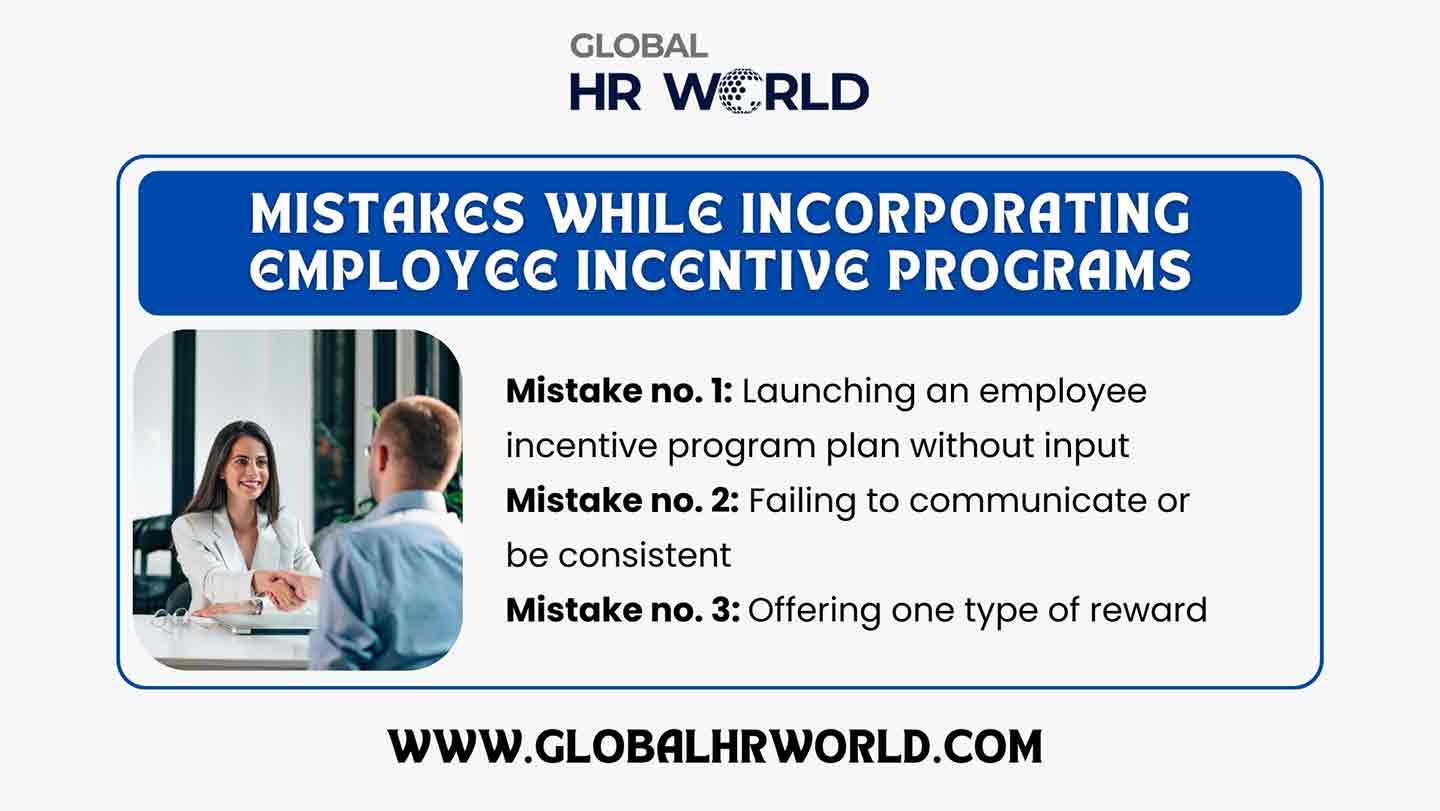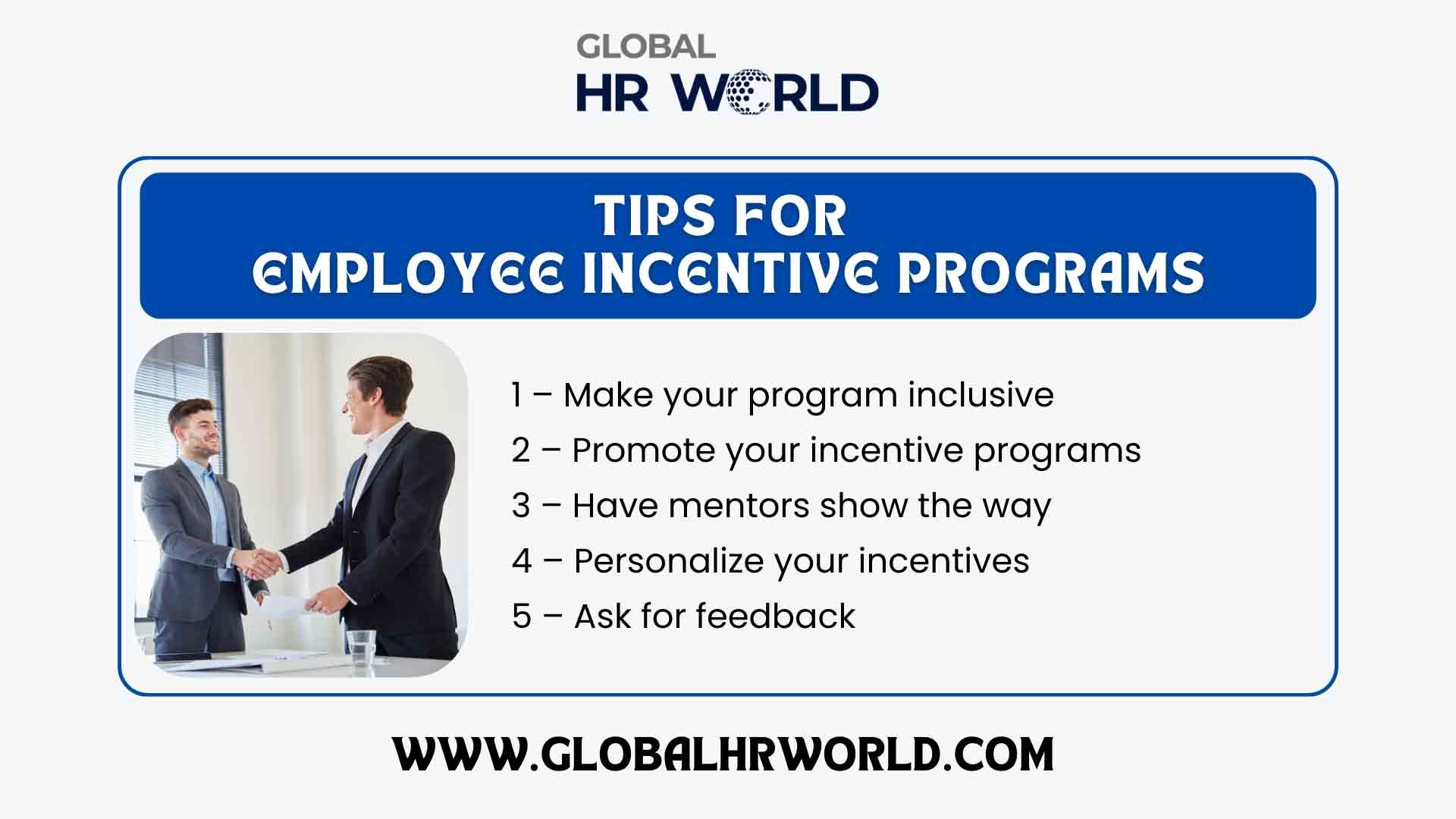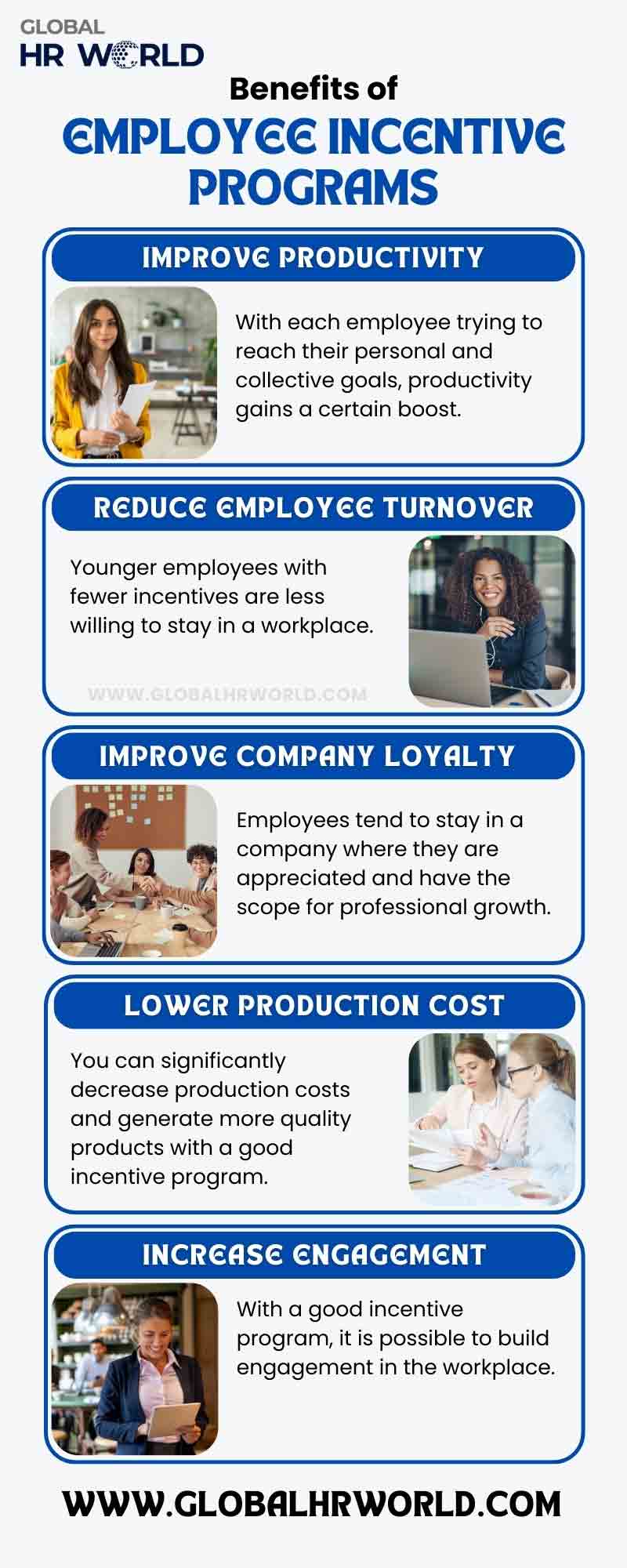What are employee incentive programs?
Employee incentive programs are opportunities to attract, engage, and retain the top talent in your organization. Why so? Incentives basically are the rewards and benefits used to motivate positive behaviors in your workforce. Employee incentive programs come in many forms. This positive reinforcement can motivate the employee and others to maintain high performance. But this employee incentive programs should suit the desires and personal styles of your employees and align with your organizational values and goals.

What are examples of the most common types of employee incentives?
The most common employee incentives are like:
- Monetary bonuses
- Salary raises
- Additional vacation days
- Public recognition
- Health and wellness reimbursements, etc.
Why do you need employee incentive programs?
Employee incentive programs work because they use human behavior. this includes the theory of operant conditioning. Operant conditioning, also known as Skinnerian conditioning or instrumental conditioning, is a development process where behaviors are modified by their consequences. This method of learning involves rewards and punishments to encourage or discourage behaviors. Immediate rewards increase intrinsic motivation by attaching an activity and a goal. So employees rewarded more frequently are therefore more motivated to complete associated tasks. The value of employee incentive programs is that they can increase employee performance and they can motivate employees to remain with their company. For example, organizations can use tangible sales incentives for their sales team to see annual revenue increases than those that don’t.
10 employee incentive programs to improve employee engagement
Employee incentive programs have tremendous advantages, but where to start from? Here are some employee incentive examples that have been proven to engage and motivate the employees over a long time.
1 – Recognition and rewards programs
Recognition matters! A recognition and rewards program embeds incentives into each team member’s everyday life. Organizations that value their culture of recognition highly are more likely to see improved employee retention and engagement and over twice as likely to see increased employee engagement. It can be both,
- Social recognition programs (the acknowledgment from one employee to another for their great work)
- Points-based recognition programs (lets every employee redeem points for rewards of their choosing)
To accomplish this, recognition should be given frequently and in real time. You can also make frequent recognition for people on your team with an employee recognition software that provides recognition from anywhere at the click of a button.
2 – Referral programs
Referral programs are an important part of employee incentive programs that reward existing employees for referring new talent. Why have your recruiters spent time posting job roles if you can rely on your own employees to source qualified candidates? Employers offer benefits for candidate referrals. When creating a referral program, make it easy, offer a mix of incentives, promote the program regularly and track results to find ways to improve.
3 – Professional development programs
Professional development programs are the continued learning and training of employees to reach individual as well as the organizational goals. When employers invest in their employees’ careers, it matters to them, and they will stick around for a long time. There are multiple ways you can provide professional development:
- Create your own customized learning and development (L&D) program
- Buy off-the-shelf courses from third party
- Develop opportunities for gamification and microlearning
- Provide just-in-time training to the employees, etc.
4 – Profit sharing programs
Profit sharing programs are a way for employers to give employees with a portion of the organization’s profits, based on quarterly or annual earnings. This empowers employees to view themselves as owners rather than just employees. This builds organizational loyalty and incentivizes employees to stick around.
5 – Health and wellness programs
Employees aren’t able to perform at their peak if they are not healthy, so wellness incentives are imperative for organizations looking to prevent burnout and promote physical and mental health. Easy examples can be free healthy lunches, on-site health check-ups, cycle-to-work reimbursements, standing desks, etc. You can also reward employees who hit gym or wellness milestones like quitting drinking/smoking or completing a daily 10000 steps challenge.
6 – Bonuses and raises
Bonuses and raises are additional payments to employees for attainment of specific goals or objectives. Rewarding employees with additional bonuses and raises can be very powerful. But you must strike a balance with your rules. The requirements shouldn’t be too difficult or too easy to acquire. Be careful not to pit your team members against each other, also. This can backfire. And it can also lead to resentment or even alienation from your company.
7 – Gifts
Personalized or unique gifts to employees are a good way to show appreciation for their work or to celebrate achievements. Celebrating your team members through gifts shows that you care. Gifts are great form of incentive for company-specific holidays, like organizational anniversaries, customer service week, global wellness day, or boss’s day. You can also make the process gamified with fun quizzes and rewards and recognize employees who participate the most.
8 – Additional vacation days
Additional vacation day is extra paid vacation period given to employees as an incentive for their hard work. It gives employees the chance to maintain work-life balance and can greatly improve motivation. You should encourage them to take the paid leave they have. Additional vacation days can also help with rising employee burnout and disconnection.
9 – Choice of projects
Giving high-performing employees the right to select their own clients/projects is a wonderful way to empower and incentivize them. Employers build trust when they allow employees to decide what to work on, something that many organizations struggle with. Employees who feel their organization trusts them are likely to trust and support their organization in return by going the extra mile and delivering exceptional outcomes time after time.
10 – Travel Incentives
Travel incentives are a part of employee incentive program, with the goal to shape employee positive behaviors, drive more engagement, and improve overall performance. Travel incentives are basically paid-for trips for individual employees or team members who have achieved a predetermined set of objectives within a specific timeframe, rewarding them for their hard work.
Would you like to add more? Comment us below.
But it does not go smoothly always!
What are common mistakes while incorporating employee incentive programs?
These are a few common mistakes:

Mistake no. 1: Launching an employee incentive program plan without input
Solution: Gather feedback from individual employees who will be engaging with the incentive program to ensure that what you are offering is something that they want.
Mistake no. 2: Failing to communicate or be consistent
Solution: Be consistent in how you maintain the incentive program, ensuring that when achievements are made, individuals are rewarded as promised.
Mistake no. 3: Offering one type of reward
Solution: Some employee value cash rewards, while others prefer to choose another option. Before you set the type of your incentive, talk to your employees to understand what they value and what would motivate them.
Now that you know the solution to these problems, here are some additional tips to follow!
Tips for Employee Incentive Programs
After you select the right employee incentive programs for your organization, you need to put them into practice. Here are some best practices to keep in mind:

1 – Make your program inclusive
You need to help employees feel involved and part of an inclusive work environment. So make sure all employees have access to your incentive programs by incorporating a variety of programs that fit every area of your organization. And also make sure the incentive program comes with a user-friendly platform where employees can easily participate and reap the benefits.
2 – Promote your incentive programs
You need to see everyone in your organization knows about your incentive programs. To achieve this, HR professionals should build promotions and communications to make every employee aware of the available incentive programs.
3 – Have mentors show the way
Mentors must serve as examples by actively participating in and advocating for incentive programs. This could take the form of references, training sessions, webinars, and even online training courses. They can then effectively encourage their team to adopt your organization’s incentive programs.
4 – Personalize your incentives
Personalizing your employees’ incentives experience is a very important step. Team members won’t work hard towards the organizational goal if they aren’t compensated for it in a way that’s meaningful to them.
5 – Ask for feedback
So, listening to your employees is the best way to gather and collect accurate feedback on your employee incentive programs. You must take the time to see how well your current incentive programs are going, to understand what your employees really want.
We hope this article helps you implement employee incentive programs in your organization.
Infographic

Knowledge Check!
Frequently Asked Questions (FAQs)
What are employee incentive programs?
Employee incentive programs are opportunities to attract, engage and retain the talent in your organization. They are basically are the rewards and advantages used to motivate positive behaviors in your workplace.
What are examples of the most common type of employee incentives?
The most common employee incentives are – monetary bonuses, salary raises, additional vacation days, gifts, public recognition, and so on.
Why do you need employee incentive programs?
The value of employee incentive programs is that they can increase employee performance and they can motivate employees to remain with their company. For example, organizations can use tangible sales incentives for their sales team to see annual revenue increases than those that don’t.



